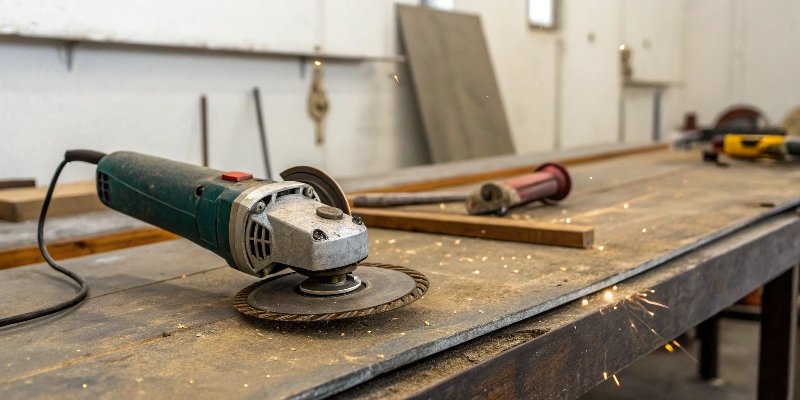
Struggling to cut tough bones? Thinking of grabbing your angle grinder for a quick solution? This powerful tool seems like an easy answer, but it’s a dangerously misguided idea.
Absolutely not. Using an angle grinder to cut meat and bones is extremely unsafe and unsanitary. The high-speed disc creates dangerous debris, contaminates food with metal particles, and produces a messy, wasteful cut. Always use dedicated, food-grade equipment for this task.
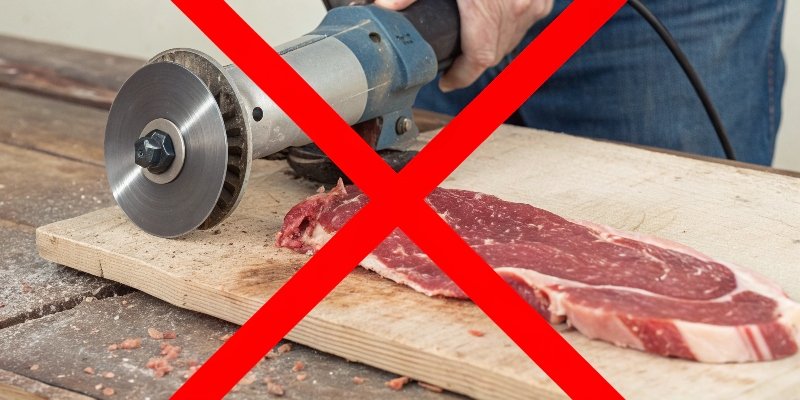
In my nearly three decades in the abrasive tools industry here in Henan, I’ve seen our products used for almost everything. We pride ourselves on the power and durability of our RL brand tools. But some applications cross a line from innovative to just plain reckless. Let’s break down why your workshop tool should never, ever meet your dinner plate. The risks far outweigh any potential convenience.
Can an angle grinder cut through bones?
You have a large, tough bone that your kitchen cleaver just can’t handle. The angle grinder in your garage beckons with its promise of power. But is it the right tool?
Yes, an angle grinder can physically cut through bone, but you absolutely should not do it. Bone is surprisingly hard—beef bone can have a compressive strength of 170 MPa—which quickly wears down standard discs, causing them to clog, overheat, and potentially shatter.
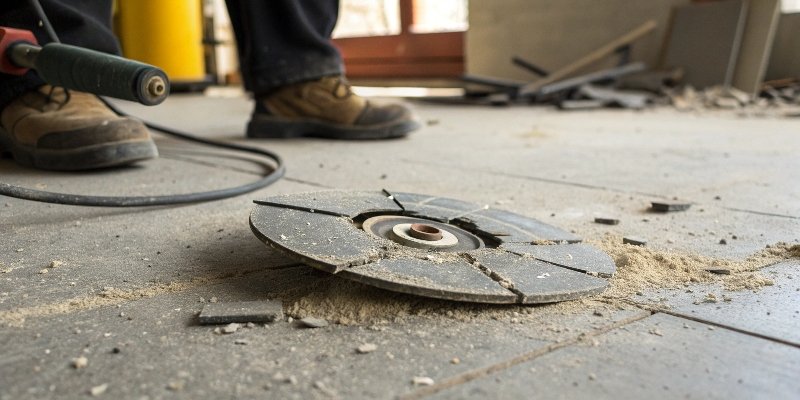
An angle grinder1 works through high-speed abrasion2, not clean slicing. When you apply one of our standard metal-cutting discs to bone, you’re essentially sanding it away at over 10,000 revolutions per minute. This creates several serious problems that go beyond just getting the job done.
The Physics and Contamination Problem
The intense friction generates enormous heat. This doesn’t just cut the bone; it burns it. The heat chars the meat, cooks the marrow, and creates a foul, acrid smell and taste. It also produces a cloud of bone dust mixed with particles from the abrasive disc3 itself. These discs are made from materials like aluminum oxide and silicon carbide, bonded together with resins. These materials are not food-safe. You are literally spraying your food with microscopic shards of industrial abrasive and chemical binders.
The Right Tool vs. The Wrong Tool
The core issue is using a tool designed for one purpose for a completely different application. It’s a principle we live by when manufacturing our tools. A purpose-built bone saw and an angle grinder could not be more different.
| Feature | Angle Grinder with Abrasive Disc | Professional Bone Saw |
|---|---|---|
| Cutting Action | High-speed Grinding | Low-speed Slicing |
| Consumable | Bonded Abrasive Disc | Toothed, Food-Grade Blade |
| Contamination | High Risk (Abrasives, Binder) | Minimal (Stainless Steel) |
| Cut Quality | Rough, Charred, Wasteful | Clean, Precise, Edible |
| Safety | Extremely Low (Kickback Risk) | High (Designed for Task) |
What material cannot be cut by an angle grinder?
An angle grinder seems unstoppable, tearing through steel rebar and concrete. It’s easy to think it can cut anything. But using it on the wrong material can lead to catastrophic failure.
Never use a standard angle grinder disc on wood, glass, or soft plastics. Wood-cutting attachments are known to cause violent kickback. Glass shatters unpredictably, and soft plastics can melt and fuse to the wheel, creating toxic fumes and a projectile hazard.
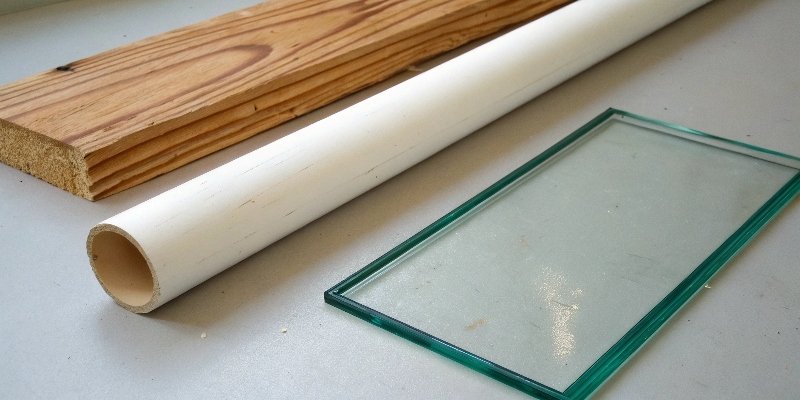
As a manufacturer, I feel a responsibility to be clear about the limits of our tools. An angle grinder’s power is only useful when paired with the right material and the correct abrasive disc. Using it incorrectly is asking for trouble.
The Extreme Danger of Wood
Angle grinders operate at speeds far too high for safely cutting wood. There are "chainsaw" attachments sold online for this purpose, but in my opinion, they are one of the most dangerous accessories ever made. The teeth can easily snag in the wood, causing the entire tool to be violently thrown back towards the operator. I have heard absolute horror stories from colleagues in the industry about the injuries these attachments cause. Stick to a circular saw or handsaw for wood.
The Fragility of Glass and Ceramics
While you can use a diamond-tipped blade on an angle grinder to score or cut glass and tile, it’s a blunt instrument for a delicate job. The high speed generates heat, which can cause thermal shock4 and lead to unexpected cracking and shattering. For any kind of precision work, a wet tile saw is the superior choice. It uses a stream of water to cool the material and blade, preventing fractures and controlling the hazardous dust.
Can you put bone in a meat grinder?
You want to make your own fresh ground meat, maybe even some custom pet food. It seems convenient to just toss in the bones with the meat. But will your meat grinder handle it?
No, you should never put hard bones in a standard home or commercial meat grinder. The machine is designed to process soft tissue. Hard bones will jam the mechanism, chip the cutting plate, damage the blade, and likely burn out the motor. It is simply not strong enough.
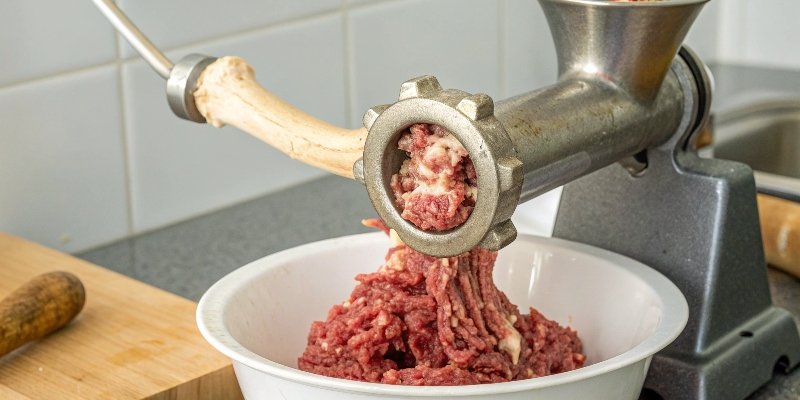
This question brings up a critical point that applies to our entire industry: using the right tool for the job. Just because "grinder" is in the name of both an angle grinder and a meat grinder, it doesn’t mean they are interchangeable. Their mechanics and intended an angle grinder uses speed; a meat grinder uses torque.
Understanding Meat Grinder Mechanics
A meat grinder works at a very low speed. An auger screw pushes the meat forward and forces it through the holes of a grinding plate, where a spinning blade shears it off. This process requires immense torque, not speed. A hard object like a beef or pork bone is simply too dense and strong for this system. The motor will strain, the parts will bend or break, and you will ruin your equipment. Some very heavy-duty, industrial-grade machines5 can handle soft bones like chicken carcasses, but these are specialized and expensive pieces of equipment, far different from what a butcher or home user would have. For the safety of your equipment and the quality of your product, keep hard bones out.
What should you not use an angle grinder for?
The versatility of an angle grinder is both its greatest feature and its biggest danger. Without proper training and respect for the tool, it’s easy to attempt a task that leads to serious injury.
Beyond avoiding unsuitable materials, you must never use an angle grinder without its safety guard. Do not operate it in wet conditions, and never use a disc that is cracked, chipped, or has exceeded its expiration date. Your safety is more important than finishing any job.
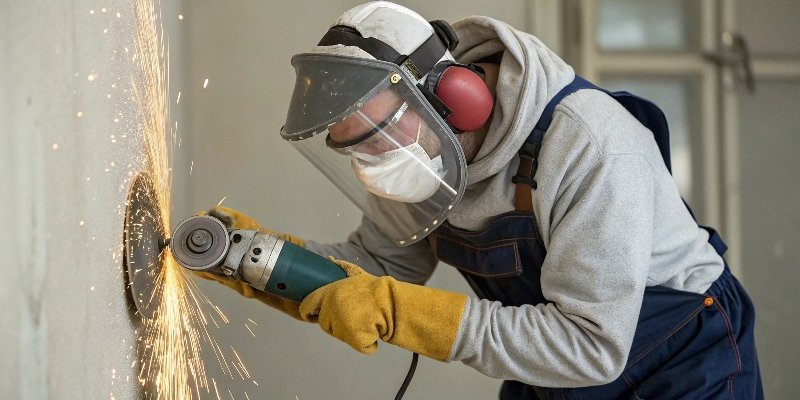
At our Reliable factory, we manufacture discs to the highest standards, but no product is invincible. Misuse is the leading cause of accidents. There are a few rules that should never be broken.
The Non-Negotiable Safety Guard
I have visited workshops where operators remove the guard to fit a slightly larger disc or to get into a tight space. This is, without a doubt, the single most dangerous thing you can do. The guard exists to deflect sparks and debris away from you. More importantly, it is designed to contain the fragments if the disc shatters under load. A disc failure at 12,000 RPM turns small abrasive pieces into lethal projectiles. Running a grinder without a guard is a gamble I would never take.
Let the Tool Do the Work
An angle grinder is designed to work using its rotational speed. You should only apply light, steady pressure and let the abrasive disc do the cutting or grinding. Pushing too hard won’t make it work faster; it will cause the motor to overheat and the disc to bind in the material. This binding can lead to a violent kickback, which is when the tool is thrown back at you.
| Quick Safety Checklist | Check | Why It’s Critical |
|---|---|---|
| Inspect Disc | Before every use | Check for cracks, chips, and the expiration date. |
| Check Guard | Guard is in place and secure | Your primary protection from a shattering disc. |
| Wear PPE6 | Face shield, gloves, guards | Protects your eyes, hands, and body. |
| Secure Workpiece | Use clamps | Prevents the piece from moving or being thrown by the tool. |
Conclusion
In short, an angle grinder is a powerful industrial tool, not a kitchen appliance. For food preparation, always use proper, food-grade equipment to ensure a safe and quality product.
-
Explore the dangers of using an angle grinder for food preparation and why it’s unsafe. ↩
-
Gain insights into high-speed abrasion and its implications for cutting materials. ↩
-
Explore the function of abrasive discs and their applications in cutting. ↩
-
Learn about thermal shock and its impact on cutting glass and ceramics. ↩
-
Find out what industrial-grade meat grinders can handle and their features. ↩
-
Learn about personal protective equipment (PPE) and its importance for safety. ↩
Written by
leeon
You may also be interested in:
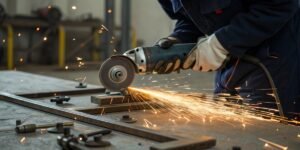
How do you cut bolts with an angle grinder?
Struggling to make a clean cut on a stubborn bolt? Using an angle grinder can feel intimidating, but it is a fast and effective method
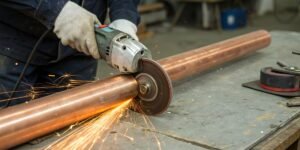
Can I use an angle grinder to cut a copper pipe?
Struggling with a quick copper pipe cut? Worried about damaging the material? An angle grinder is a fast solution, but using it wrong can be
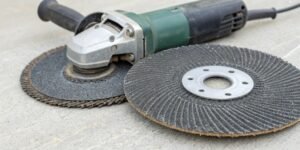
Can a metal cutting disc be used on an angle grinder?
Are you unsure about putting a metal cutting disc on your angle grinder? Using the wrong tool combination is a real safety hazard. But with
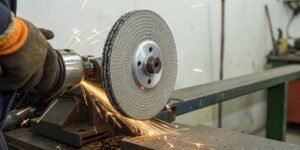
What is the best grinding wheel for cutting aluminum alloys?
Struggling to cut aluminum without your grinding wheels clogging up? This common problem wastes time, ruins your workpiece, and drives up costs, turning a simple
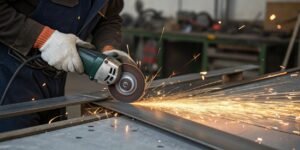
What does an angle grinder do that other tools can't?
Struggling with tools for multiple tasks? Carrying a heavy toolbox is inefficient. An angle grinder replaces many tools, saving you time and effort on the

Which material is used in making cutting wheel?
Have you ever used a cutting wheel that wore out too fast or just wouldn’t cut? The right material is key to solving this problem
